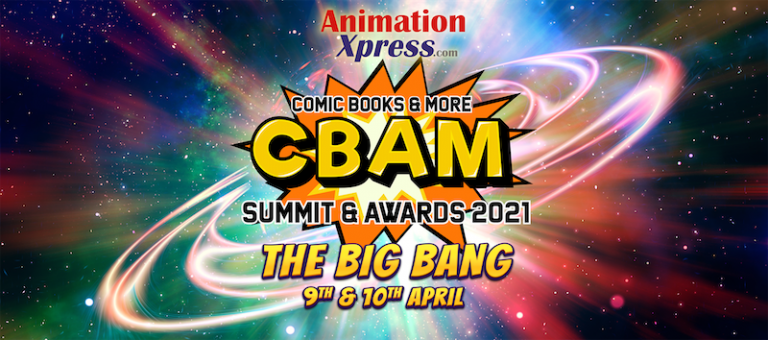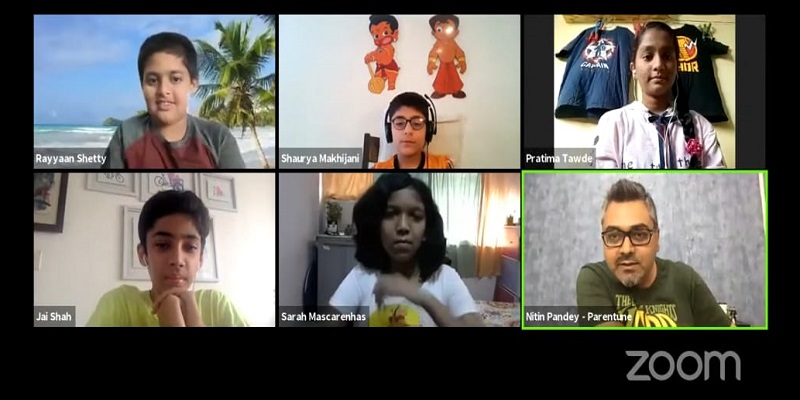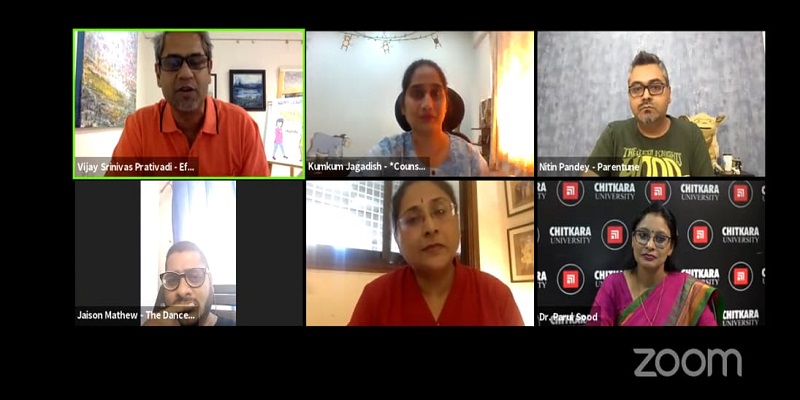
Surely kids are the superhero of the AVGC sector. How could we miss them at the Comic Books and More (CBAM) Summit? Our session No ‘kid’ding: It’s all about comics was hosted by parentune founder and CEO Nitin Pandey and the panellists included school going kids – Pratima Ravindra Tawde, Sarah Mascarenhas, Shaurya Makhijani, Jai Shah, Rayyaan Shetty. Pandey welcomed the kid with a surprise guest – a Baby Yoda plushy, and opened the floor for the kids to discuss their favourite comic characters and share reasons why they like them.
Shetty said his favourite comics are Suppandi and Captain Underpants. “Suppandi is definitely a situation that I can relate to like taking things too literally and falling under trouble. It’s like how the world would be if everyone started taking everything so literally. In Captain Underpants, George and Harold are definitely not like me but it is fun,” he expressed.
Comic characters are not just characters, they are the inspiration for many. Similarly, Mascarenhas expressed that one of her favourite comics is Obelix and co mostly because of the main protagonist, Obelix’s job. She said, “He is a very funny character because he has a very different personality; sometimes he is moody, sometimes he is funny, he is very temperament actually. If I get a chance, I would like to do the job he does.”
Slowly the panel moved towards the serious matter whether the comic way of learning is good or bad, what a child could learn through comics, how comics could push the imagination button in the kid, benefits and so on.
Our smart kids’ shared their strong feeling about it like any other industry experts, by pouring lights on their real-life examples. Shah shared, “Learning from comic books will add the fun element and it will not make studies boring. Since it will be a fun way to learn, it won’t stress you out. Then maybe you will perform better in the test.”
To that Makhijani expressed, “Yes, comic books are a good idea inside the classroom because the children would like it, they will study more, won’t have stress and there will be no concern in their minds. They will be learning in a whole different manner so they will be comforted and won’t be stressed at all. I have learnt the history about what people have done, their life, how they look through comics.”
Highlighting another interesting part Tawde mentioned, “The concept in comics helped me in my writing skills during the English period. They asked me to write a story and that’s when I penned Shikkari Shambhu‘s story. It was really helpful for me to improve my writing skills.”
Overall the session sent an impactful message to the creators that they should ramp up creating educational content in a comic way and teachers’ should tap on teaching with comic books methods so that children could find it interesting to learn and explore which will again reflect the grades of the children.
When we are talking about the future of the kids we can’t miss the teachers who play a very important role in shaping the young minds, to the path of knowledge. That is why our next panel was about Teaching the Comic way to discuss how the teaching should be which was hosted again by Pandey with the distinctive panellists, Chitkara College of Education associate professor cum academic co-ordinator Dr Parul Sood, Efundu Comics founder Vijay Srinivas Prativadi, psychologist and counsellor Kumkum Jagadish, Jasudben M L School and Bloomingdales Pre Primary School educationist and principal Damayanti Bhattacharya and The Danceworx assistant artistic director and HOD Jaison Mathew.
Young minds are made up of sponge, they soak up every information possible in their childhood which helps them to shape their future and choose accordingly. Whatever kids will learn and explore today, they will grow up with the same ideology and mindset.
Commenting on the previous session, Mathew rightfully said, “I heard this somewhere a long time ago which stands so true hearing the kids today – This generation’s philosophy, will be next generation’s common sense.” He further disclosed, “20 years back, English was not the normal language for me. That time there was a comic book called Archie which I used to borrow from my friend. I used to read it, make notes out of it because it was in the western language and used to be updated with colloquial slangs which wasn’t there in India. I used those slangs and the jokes in daily life.”
In the earlier panel kids shared that they would prefer that their textbook should transform into a comic textbook so that the learning becomes fun and not boring. Bhattacharya shared why kids want to pursue comic way learning. She said, “The reason why a child is attracted to a comic book is because of the visuals and secondly, the language is very simple which helps the kids understand the content very easily. Once they understand these complex thoughts and ideas, they could dwell on those thoughts.”
One of the important factor comic books helps students in is to build concentration while studying which again reflects in the grades of their examination. Jagadish expressed, “Visuals, colours, emotions, characters, words are the different elements of the comic book. Each element either individually or in a joint manner triggers the imagination of a child. That is why a young panellist said that a picture speaks a thousand words because while they are looking at it, their imagination is running. Once they pay attention to the picture, they pay attention to the particular panel and what is important for concentration is attention.”
To create modules of teaching in a comic way, we may need to tinker the comic book structure to accommodate subject needs like tone of voice. Storytelling sensibilities may be different when doing science or value education, as instructional methodology will have to be interspersed with storytelling. While sharing a science comic strip, Prativadi shared, “Learning through the comic book is a welcome move but it requires a buy-in from all the stakeholders from parents, teachers and institutional heads as syllabus is developed differently though aligned to the national curriculum.” He also added to a query on assessment that learning impact can be measured even through an app.
Comic way learning will also open opportunities for the teachers to hone their skills as well as help academic content creators to create comic content for textbooks. “Definitely there are opportunities we have as a teacher while teaching in a comic way. As a teacher, we need to tap upon those opportunities, understand what the crux of the lesson which we want to impart. And working on the crux and revolving around the concept of creating a comic book for a teacher is creativity in her hand, which she can showcase in her class at any level.”
Overall the session was insightful and also an eyeopener for the ecosystem as it showed that, to take a leap to teach and learn in a comic way, teachers and kids need to support each other and explore more to find a way to make it fruitful.


